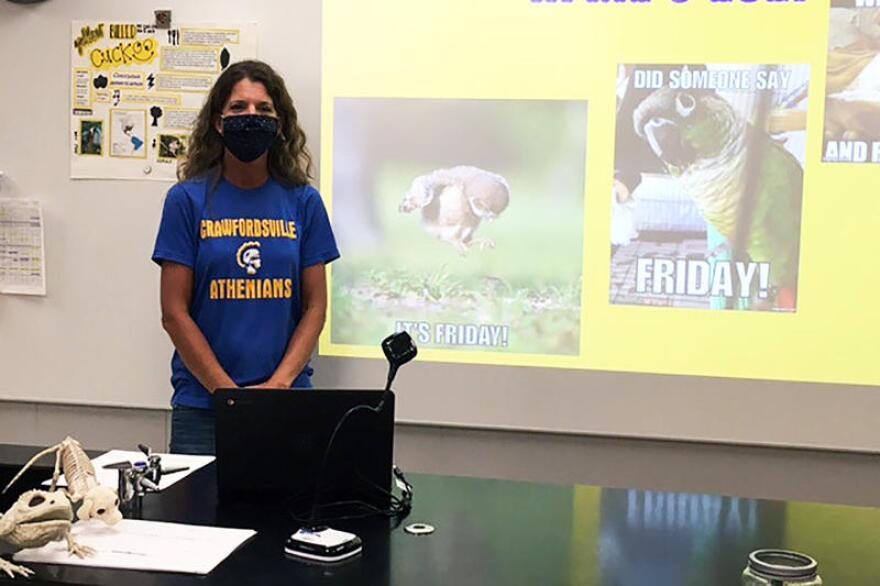Jenny Veatch teaches biology and vertebrate zoology at Crawfordsville High School, and the past year of teaching has been unlike any of her 25 years in public schools.
This time last year, she remembers being worried and thinking – like so many others – they would leave early for spring break, and come back in a couple of weeks.
"You know, you're a little worried, and you kind of heard of this thing, but there wasn't the panic. But I do remember leading up to that and all of the emails, you just kept checking your computer to see what the administration was saying," she said.
Veatch said she remembers the build up to the lockdowns and last normal day of school the way she remembers where she was on 9/11.
After spring break ended and kids didn't come back, she said conversations with her school's leadership team started getting serious. They talked about how to connect with kids who didn't have Wi-Fi, and how to make sure teachers had resources to do their jobs remotely too.
"And that's when it hit home. We had to figure out a way for this to work for the students and to give the staff the tools they needed. I mean, we went home with, you know, our Chromebook, and that's probably about it," Veatch said.
At that point, nobody had cameras or adjustable microphones – they would eventually, but technology was only the first set of obstacles to consider. She said school leaders talked about things like liabilities, how many kids could even join a video meeting, and what that should look like.
Then, there was the challenge of getting kids to show up – and keep showing up.
"There are some that never, ever showed up again. I emailed, I called, I did everything I possibly could. But they were gone," Veatch said.
In the fall, Veatch said they wanted kids at the high school to come back at least part time, to keep them accountable and foster those connections with them. In October, the school came back full time, but it didn't look the same.
Veatch said her classes only recently did their first hands-on lab of the school year. The kids can't work with partners, and are supposed to follow social distance guidelines – something she said has affected the dynamics in her classroom.
"It's kind of sad to think that we've got a whole year, and there's been so little interaction, and I think that's what I miss most at the school. When they're masked up sitting in straight kind of, you know, sterile rows. They aren't as apt, they don't talk, they don't interact," she said.
She also misses the time she used to spend working alongside or chatting with other teachers. Meetings that used to occur regularly don't happen anymore or nearly as often, and they try to stay separated.
READ MORE: How Will Indiana Distribute COVID-19 Vaccines? Here's What You Need To Know
Join the conversation and sign up for the Indiana Two-Way. Text "Indiana" to 73224. Your comments and questions in response to our weekly text help us find the answers you need on COVID-19 and other statewide issues.
But she says a year of teaching during COVID-19 hasn't been a complete loss. It's made her rethink how she does things, and she's learned a lot about technology and alternative tools to help kids learn.
"Once you've done things for so long, you kind of get in a rut and I think maybe this was kind of one of those, 'hey, you can't do things differently.' A lot of these activities I'm coming up with, I absolutely will disperse and use, as hopefully we get back to what is a more 'normal' in the next couple of years," she said.
Looking ahead, she's eager for kids to work together again, and spend more time collaborating after a year of isolation. She's also hoping to attend more extracurricular events to support her students, and says she's excited to see them get back the iconic high school experiences so many have missed out on.
"I missed that – can be sports, to plays, to the choir concert, to homecoming, prom – just that traditional high school experience that they just aren't getting to have and it breaks my heart. So that's my biggest hope."
Contact reporter Jeanie at jlindsa@iu.edu or follow her on Twitter at @jeanjeanielindz.




